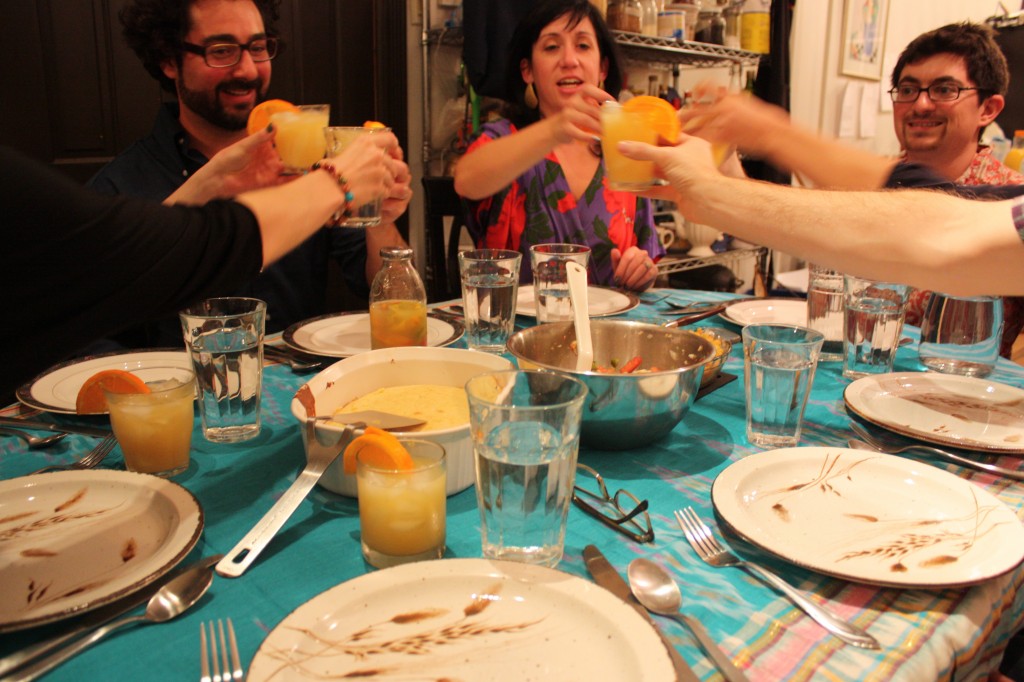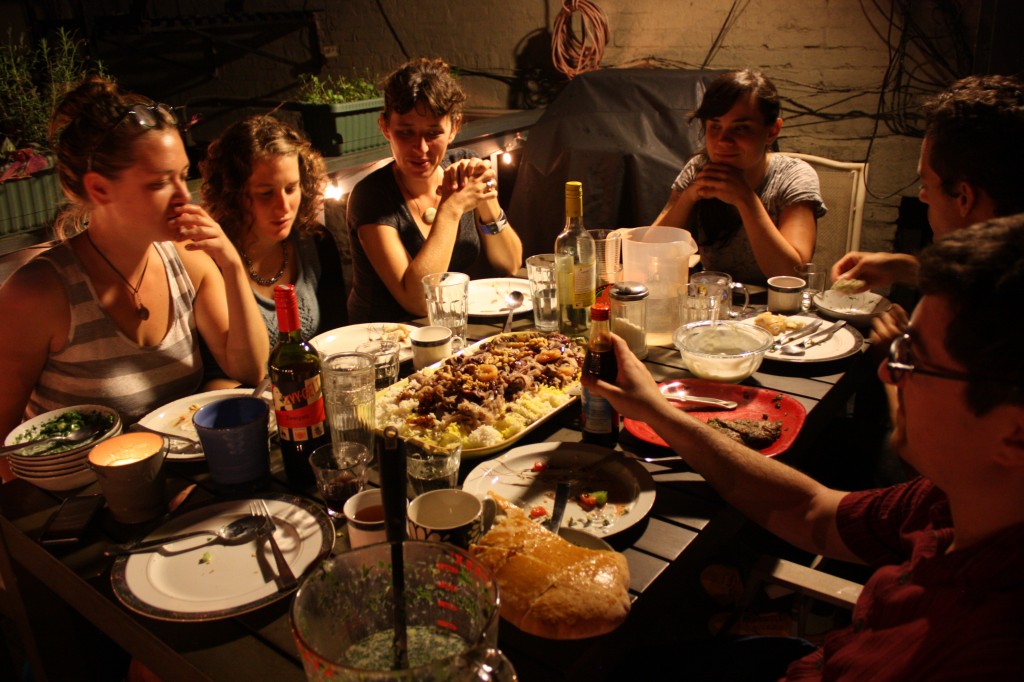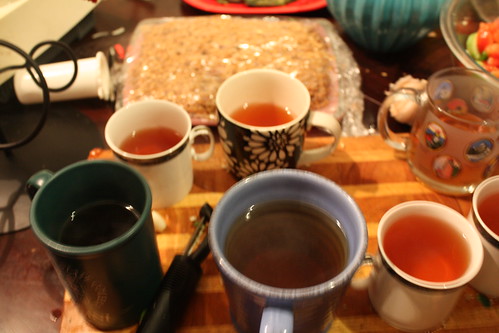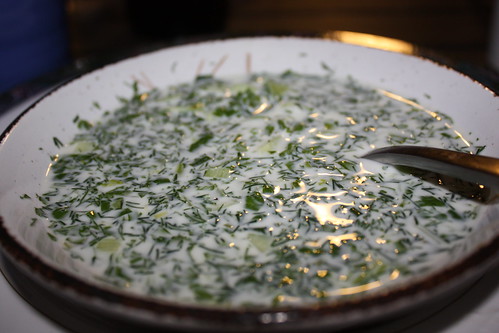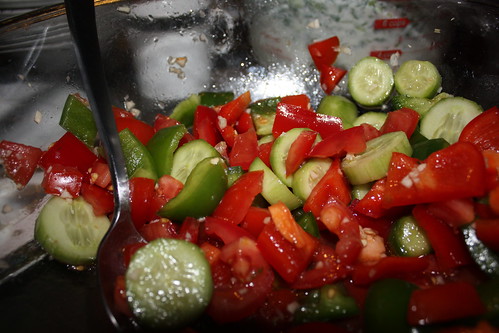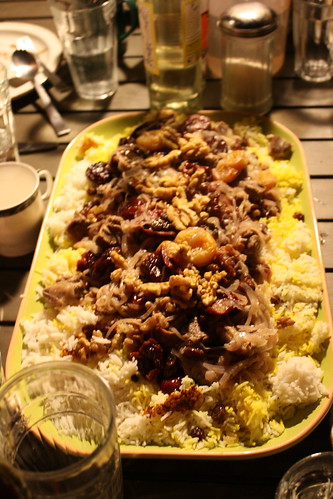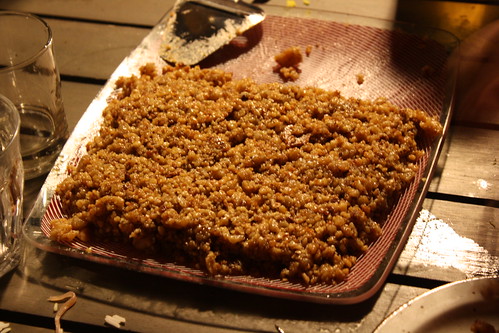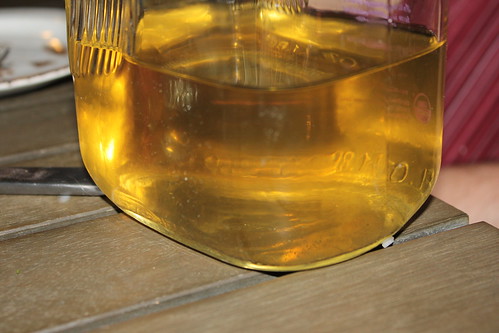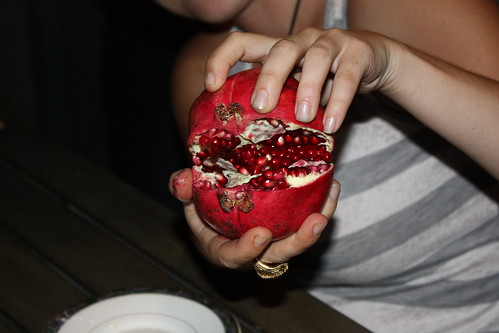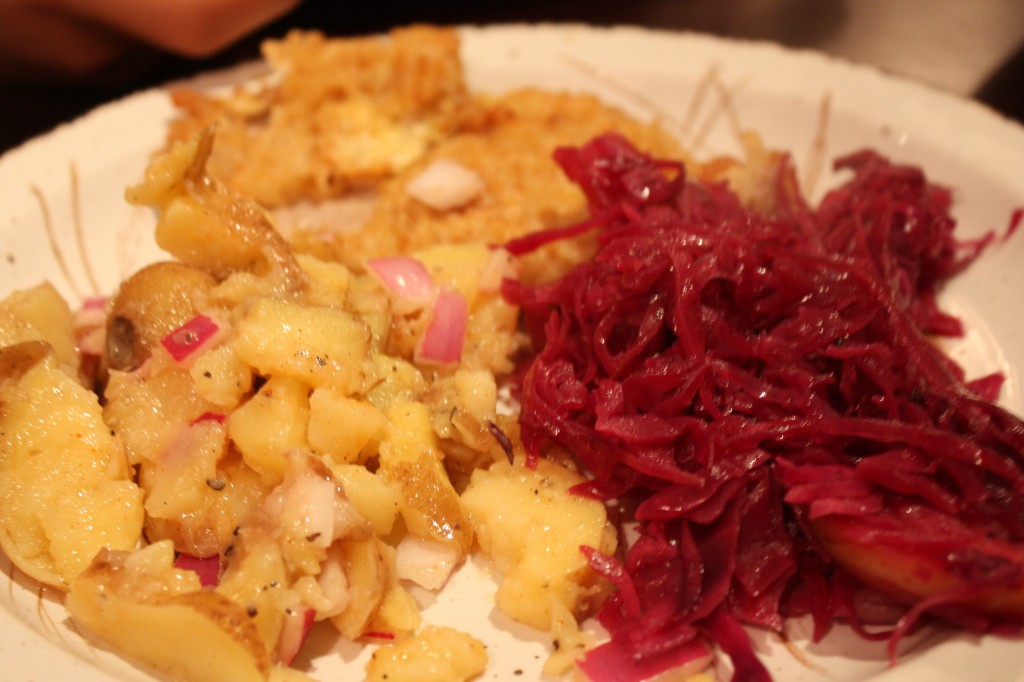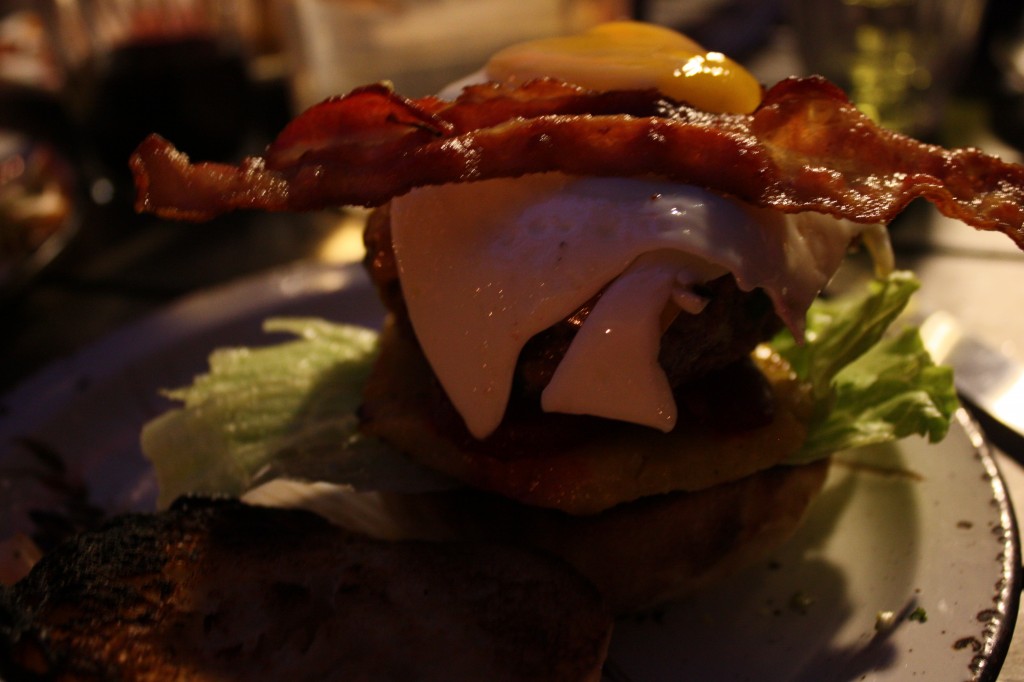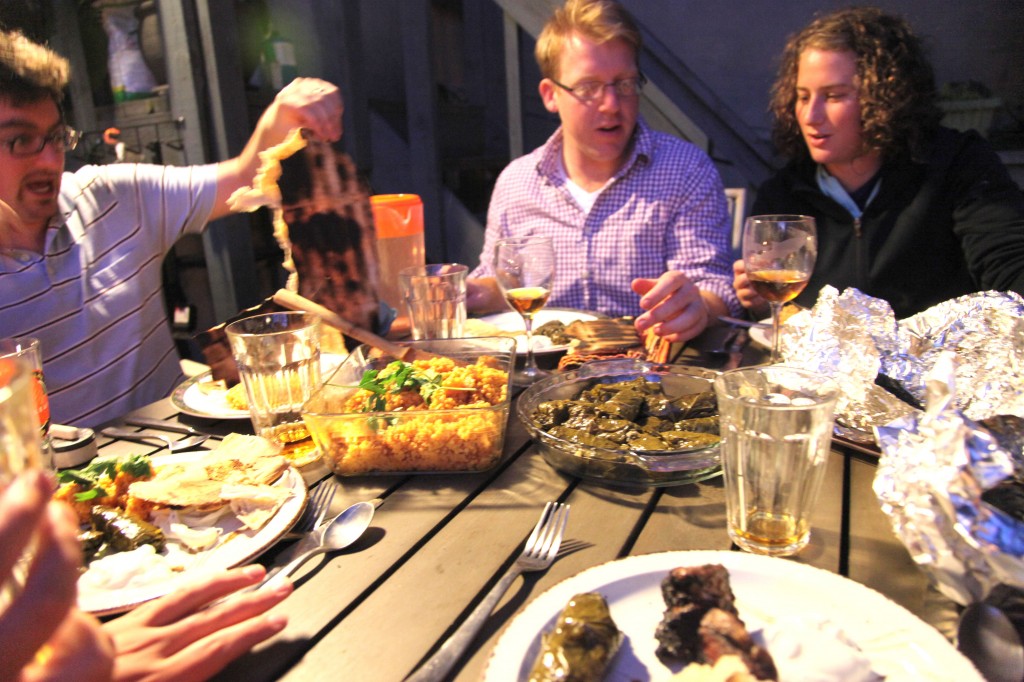The word Bahamas is attributed to the Spanish "baja mar," or under the sea. Accordingly, seafood was a prominent factor in this meal. Amazing we got through eleven meals before cooking fresh treats from the ocean. (Remember, for Antigua and Barbuda, the fish was salt cod.) And by all accounts, the seafood that defines Bahamian cuisine is the conch — pronounced conk.
To find this and other ingredients such as sour orange, I biked up to south Williamsburg and to the inimitable Food Bazaar. Aside from bird peppers and fresh guava, I found everything I needed, and even then I found acceptable substitutes in scotch bonnet peppers and frozen guava paste.
Our guests tonight were Kate and her husband Jason (our bartender for the evening), Dan and Raven, Sarah-Doe, and Alex.
Old sour | Recipe

A good, medium-spicy marinade and hot sauce that was super easy to make. The sour orange imparts a flavor that really is partway between lime and orange.
Crawfish salad | Recipe
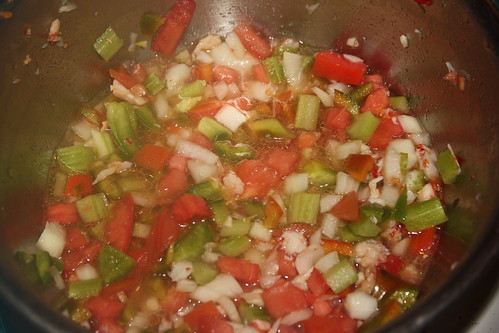
One guest noted that this was like an Israeli salad with shellfish. I don't think I managed to get as much meat as I should have, the one pound of crawfish yielded at most two ounces of crawfish tails, and given that the recipe calls for two tails, I'm pretty sure that the crawfish they get in the Bahamas are much bigger. Anyway, it was tasty and tangy and spicy and a great start into the meal.
Bahamian macaroni and cheese | Recipe

Kate was apparently craving mac and cheese on her way to dinner, and boy was she surprised that I was making some! The Bahamian variation is really easy to make, and with a little bit of veggies chopped in for a very slight semblance of healthiness. (You're vindicated, Cracker Barrel.)
Johnny cake | Recipe

This was really no different from a good old cornbread, but enjoyed nonetheless. (Most johnnycakes are more like pancakes made with corn, but not this one.)
Stewed conch | Recipe

The main event of the meal. That conch was quite a bit to deal with. Fortunately I didn't have to extract it from the shell, but I did have to remove the skin (yeah, this shellfish meat has a skin, imagine that), pound it to the point of falling apart, boil it for 45 minutes, and then throw it in the stew. The stew itself was based on a roux, and was pretty well laden by both sweet and "Irish" potatoes. Went nicely with some of that old sour!
Guava duff | Recipe (scroll to bottom)
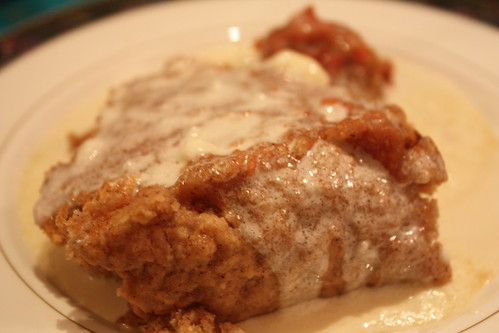
Duff is a word for a boiled pudding, such as the traditional English plum pudding. This is a tropical version thereupon: sweet spiced dough stuffed with a guava filling, pressed into a cast-iron pot, which is put into a larger pot of boiling water for like two hours. Many recipes seem pretty simply flavored; I found this version with more spices that seems a little more historically aware. I've never quite made anything like this, and it turned out really nice: the kind of mushy texture was totally OK due to the dual sweetnesses from dough and fruity filling, and any possible objection was drowned out by the sauce made of butter, powdered sugar, egg, and rum.
Rum drinks

Jason put together lovely tropical rum drinks, and then later we transitioned to Dark and Stormys (stormies?) with some seriously fancy ginger beer. Since the weather cleared up by the end of the meal, we lingered over our drinks on the porch.
All told, Bahamian food was a little more interesting than I'd expected. And unlike last week, no leftovers to speak of, other than half a Snapple jar of old sour. And now, back across the ocean to Bahrain — another small island country with a British Empire history, but that's probably where the similarities end.
